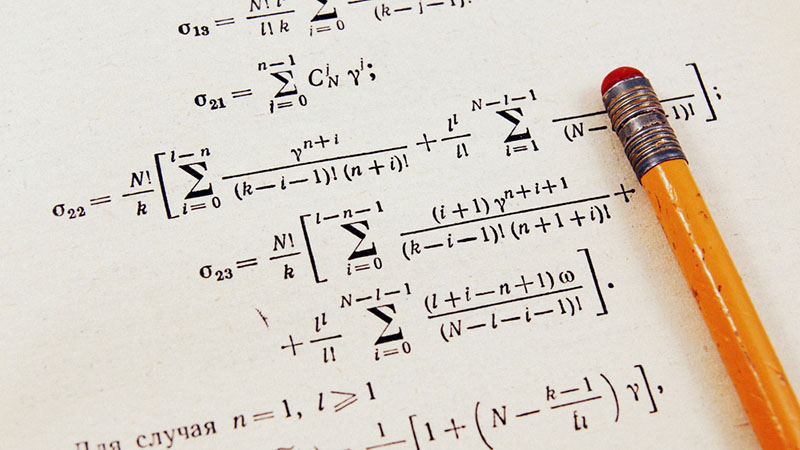Are you worried about taking the GED math exam? Don’t worry, you’ve come to the right place! This blog post contains a comprehensive GED Math study guide to help you pass the Math section. With this comprehensive guide, Get-TestPrep will cover the major topics on the GED math test, such as variables and line plotting, and will provide you with some useful tips and tricks to help you pass the GED Math exam.
What’s On The GED Math Test?
The GED Math test is one section of the GED (General Education Development or General Education Diploma) test. This math test has 46 questions, of which you have to correctly answer at least 65% of questions to pass the test, and the passing score is 145 points. You are allowed 115 minutes to deal with the GED Math questions. The question types are various including:
-
Multiple-choice: This is the most commonly seen sort of evaluation question. Multiple-choice questions require students to select one right answer from four or five potential answers.
-
Multiple-select: This style of question differs from multiple-choice questions. Multiple-choice questions require the learner to choose all of the right answer choices from a list of options. Instead of having just one correct answer, there might be two or more.
-
Fill-in-the-blank: The student is asked to put their answer into a box following the question or a box that is part of a phrase in this sort of inquiry. In arithmetic, the answer is frequently numerical, but it can also be a written word or a brief sentence.
-
Drag-and-drop: This question type features “draggable” response alternatives. When a student clicks and holds on a draggable choice, they may drag it to a “target” location to properly answer the question. There may be two or more target regions at times.
-
Matching: When the information in a column matches the information in a row, the student is asked to tick a box. One column heading might be “true” and the other “false.” Students would read the material in a row and determine if it was true or incorrect.
- Table entry: This style of inquiry is typically used with a two-column table of values. Certain cells in the table will include a box where the student may input a number in order for the table to be correct.
The GED Math test consists of two parts. The first part has 5 questions that aim to assess your arithmetic competencies and basic number sense, and you are not allowed to use a calculator in this first part. The second part includes 41 questions and aims to test important and useful math formulas. You are allowed to use a calculator on this second part, so you can bring your own TI-30 XS calculator or use the available on-screen calculator.
There are four main types of math on the GED math exam. You should cover all these types to be well-prepared for the exam:
- Basic Math: The foundation of math includes numbers and the four operations – addition, subtraction, multiplication, and division. This is called “basic math”. Whole numbers, decimals, percents, and fractions are also different kinds of numbers. Basic math also involves exponents and finding the square roots of numbers.
- Geometry: Another integral part of math is shapes. In the GED exam, you will be asked questions about different types of shapes and how numbers relate to those shapes. You will be asked about the area and perimeter of two-dimensional shapes, and the volume and surface of three-dimensional shapes. Therefore, you should learn about quadrilaterals, cubes, triangles, pyramids, cylinders, prisms, and cones to be well-prepared for the exam.
- Basic Algebra: The extension of basic mathematical concepts is called algebra. In algebra, certain numbers are placed by letters, called variables, and this is the only difference between basic math and basic algebra. When this happens, you have algebraic expressions and equations. The GED exam will ask questions about simplifying algebraic expressions and solving equations. You will use the Quadratic Formula to simplify algebraic expressions and solve equations and inequalities.
- Graphs and Functions: Functions have to do with the inputs and outputs of numbers. You need to know about the basic graphs, function notation, coordinate plane, and identifying functions to demonstrate your understanding of functions. In the GED exam, you will be asked about all aspects of functions such as graphing lines and inequalities in the coordinate plane, identifying points in the coordinate plane, interpreting graphs, identifying functions, and evaluating functions.
Take our free GED Math practice test to review all the core concepts you may need in your GED Math Section.
GED Math Study Guide: How To Pass The GED Math Test?

To prepare for the GED exam, you must know what to study and how to go about it. Below are ten useful tips for how to pass the GED math test that you can apply.
- Take and Use Notes
A critical way to shift new information that’s learned from the brain’s short-term memory bank to the brain’s knowledge vault is by taking notes. There are three steps to improve your memory and solidify learning:
- Take notes: Writing down information that you thought is important to you whenever you are hearing, reading, or seeing study material is an effective way to engage you in your study. The reason is that more of your brain will turn on when you take action. You’re focusing more when you’re doing something.
- Get organized: You can organize information in any way as long as they are in a logical order and make sense to you. You can highlight, circle, or underline important information. Once you review and organize the notes, the information is refreshed in your mind and organized mentally.
- Review it: Not only should you note the new information or keywords but also the information which seems unclear. To see the relationship between ideas and facts to each other, you should outline the information. In addition, make another list or outline of what you feel you’ve learned to determine how this new knowledge can be used in real-life situations. Now, review unclear material, and you’ll probably discover that it’s clear.
- Study on your Mobile Device
If you have a busy schedule and have trouble finding time to study, you can try to study on your phone or tablet.
You can practice with our thousands of free GED practice questions and read our GED study guide series for all subtests on this website on any device. And our GED practice test applications are available on both Appstore and GooglePlay.
Many GED students have taken advantage of studying on their mobiles. They just need to spend a few minutes each day studying on their phone as there are a variety of short lessons available for them to learn and practice for the GED Math test. They can complete lessons during their break, lunch, or even on their commute.
- Set Goals
To stay motivated in your learning, you should set goals for yourself. Once you accomplish goals, you will feel productive and like you’ve achieved something new. Celebrating each milestone on your way to taking the GED test is also very important. Ensuring that your goals are:
- Attainable: Think about your reality and schedule when you set goals. You should set a reasonable amount to study each week. You should not set goals that are too hard to achieve; still, don’t make them too easy. You must know your limits, still, push yourself a little bit.
- Measurable: You should set goals that you can measure, and your goal should be as specific as possible. Don’t set goals like “I’ll be better at math”, instead you should specify your goal like “I’ll study six hours this week”. By doing this, you can see how to progress toward your goal. To accomplish your goal easier, try to specify it as much as possible.
- Within your control: Don’t set a goal like “I’m going to pass my Math GED test in June” because it is hard to control. Instead, you should set a goal like “I’m going to take my Math GED test in July”, so you need to prepare for the test by July and be ready to take it.
- Learn from Wrong Answers
Don’t be afraid of difficult questions and wrong answers. “Try and error” is an effective learning tool to help you learn as wrong answers get your attention and give you the incentive to learn. So, how can you use wrong answers to help you study? If you meet difficult questions while you’re studying, don’t miss it, get the answer even if it’s wrong. Then, you find out why this answer is wrong and it really helps you to learn better.
- Study Everyday
To help build a routine and reinforce your mental pathways that help with memory, you should spend at least 15 minutes learning every day. Learning is like exercise, if you skip a day, it’s harder to go back the next day. Therefore, once you’ve set a goal to study, try to study every day because it will keep your brain active and your memory strong.
- Read Questions Carefully
Questions usually are tricky, especially word problems, so read each of them thoroughly to clearly understand the question and know what it’s asking. To avoid making mistakes, read the questions again to double-check.
- Eliminate Wrong Answers
When you take the GED Math test, there will be some questions for which you don’t know the correct answer. However, you can narrow it down by eliminating the answers you know are incorrect. This reduces the number of options, and you will have a higher ability to guess right.
- Skip Hard Questions
There will be some questions on the GED Math test that make you stumped. You can flag it and come back later. The reason is the time for tests is limited, so skip hard questions and answer the questions you know you can answer correctly first.
- Translate Word Problems
Word problems can be perplexing at times because some questions provide so much information and you are unsure what the question is asking. When answering these questions, try to eliminate unnecessary information, simplify it in your own words, and rewrite it as an equation before solving it.
- Use the Entire time
The GED Math exam is 115 minutes long. Don’t just sit around if you finish the test ahead of time. Check to see if any changes are required.
FAQs

Is the GED math test hard?
Whether the GED math test is hard or not depends on how you prepared for the test. The test will not be difficult if you have taken the time to study for the test. This test aims to test your skills and ensure that you have a solid understanding of basic math, algebra, graphs, and more. Therefore, by taking the time to prepare, learn, and practice for the GED Math test, you can be confident about achieving a passing score.
What math topics are on the GED math test?
To learn and practice for the GED math test, you need to know the important topics on the test including Basic Math, Geometry, Basic Algebra, and Graph & Functions. After finishing this GED Math study guide, you can visit our website to easily access our GED practice test 2026 and familiarize yourself with all the above types of math. Let’s start now!
Can I use a calculator on the GED math test?
The GED math test consists of two sections. For the first section, you are not allowed to use a calculator; however, you can use a calculator in the second one. Therefore, remember to bring your TI – 30XS calculator or use the available on-screen calculator.
How many questions can I miss on the GED Math test?
There is no exact number of questions you can miss and still pass the GED Math test because one question doesn’t always equal one point. On the GED Math test, one question can equal multiple points because that question requires you to fill in the blank or multiple selections, where you must select multiple answers. Therefore, according to the GED Testing Service, you have to get approximately 60-65% of your points to pass the test. The GED Math test has 46 questions, and a passing score is 145-164.
How many times can I retake the GED Math Test?
There is no limit; however, if you fail the GED Math test 3 times continuously, you have to wait for 60 days before retaking the test.
Who is eligible to take the GED Math test?
Before taking the GED Math test, you must meet a few requirements. First of all, you must be at least 16 years old. In addition, you are not enrolled in high school or have not graduated from high school. Finally, you must meet all of your state’s requirements like the length of time since leaving school.
Read more >> A Comprehensive GED Science Study Guide In 2026
Final Words
In conclusion, with its detailed explanations, practice problems, and targeted strategies, this comprehensive GED Math Study Guide equips test takers with the necessary tools to succeed on the GED Math test. By familiarizing oneself with the content areas, practicing with sample questions, and employing effective study techniques, individuals can boost their confidence and improve their performance on the GED Math test. Whether you are aiming to earn your GED diploma or seeking to enhance your mathematical skills, this GED Math Study Guide serves as an invaluable companion throughout your preparation journey. Invest the time and effort into mastering the concepts and applying the strategies provided in this guide, and you will be well-prepared to conquer the challenges of the GED Math test.
Eligibility Requirements For GED In District of Columbia
November 25, 2022

Eligibility Requirements For GED In New York
November 25, 2022

Eligibility Requirements For GED In Wyoming
You may learn more about how to obtain a GED in Wyoming by reading the answers to the questions related to GED requirements in Wyoming we receive below.
September 19, 2022

